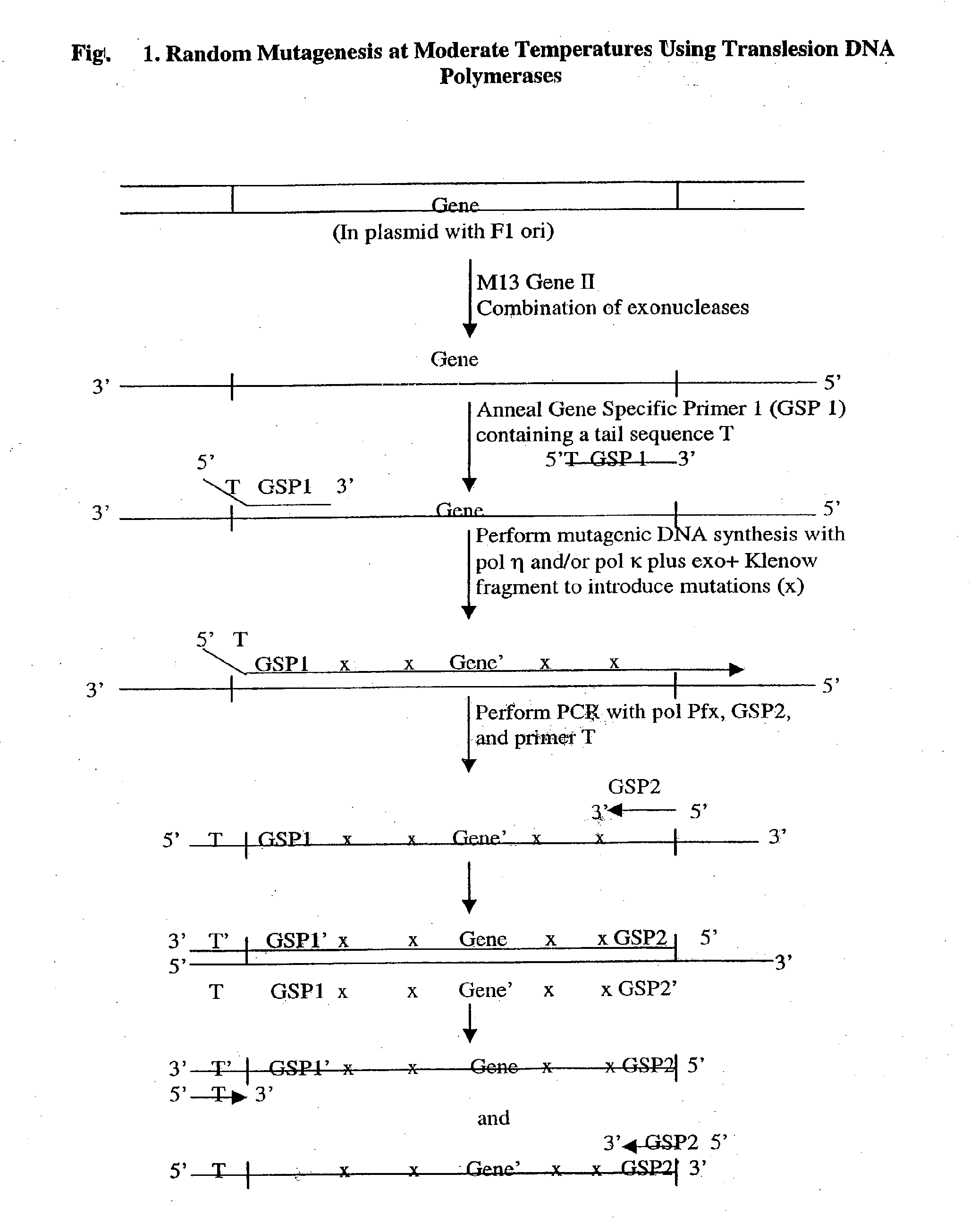Methods of random mutagenesis and methods of modifying nucleic acids using translesion DNA polymerases
a dna polymerase and random mutagenesis technology, applied in the field of molecular biology and protein chemistry, can solve the problems of high difficult control of rate of mutation and distribution of mutation type, and inability to obtain mutation number and type in a mutant population, etc., to improve enzymatic activity, antibody binding affinity, receptor properties, effect of ligand interaction
- Summary
- Abstract
- Description
- Claims
- Application Information
AI Technical Summary
Benefits of technology
Problems solved by technology
Method used
Image
Examples
Embodiment Construction
Definitions
[0059]In the description that follows, a number of terms used in recombinant DNA technology are utilized extensively. In order to provide a clearer and consistent understanding of the specification and claims, including the scope to be given such terms, the following definitions are provided.
[0060]Translesion DNA Polymerase. As used herein, the term “Translesion DNA Polymerase” refers to members of the UmuC / DinB / Rad30 / Rev1 Superfamily of DNA polymerases or refers to DNA polymerases with mutation rates greater than 0.5-1×10−4 mutations per nucleotide incorporated, more preferably, at least 9×10−3, at least 8×10−3, at least 7×10−3, at least 6×10−3, at least 5×10−3, at least 4×10−3, at least 3×10−3, at least 2×10−3, at least 1×10−3, at least 9×10−2, at least 8×10−2, at least 7×10−2, at least 6×10−2, at least 5×10−2, at least 4×10−2, at least 3×10−2, at least 2×10−2, at least 1×10−2, at least 9×10−1, at least 8×10−1, at least 7×10−1, at least 6×10−1, at least 5×10−1, at least...
PUM
| Property | Measurement | Unit |
|---|---|---|
| temperature | aaaaa | aaaaa |
| temperature | aaaaa | aaaaa |
| temperature | aaaaa | aaaaa |
Abstract
Description
Claims
Application Information
 Login to View More
Login to View More - R&D
- Intellectual Property
- Life Sciences
- Materials
- Tech Scout
- Unparalleled Data Quality
- Higher Quality Content
- 60% Fewer Hallucinations
Browse by: Latest US Patents, China's latest patents, Technical Efficacy Thesaurus, Application Domain, Technology Topic, Popular Technical Reports.
© 2025 PatSnap. All rights reserved.Legal|Privacy policy|Modern Slavery Act Transparency Statement|Sitemap|About US| Contact US: help@patsnap.com

